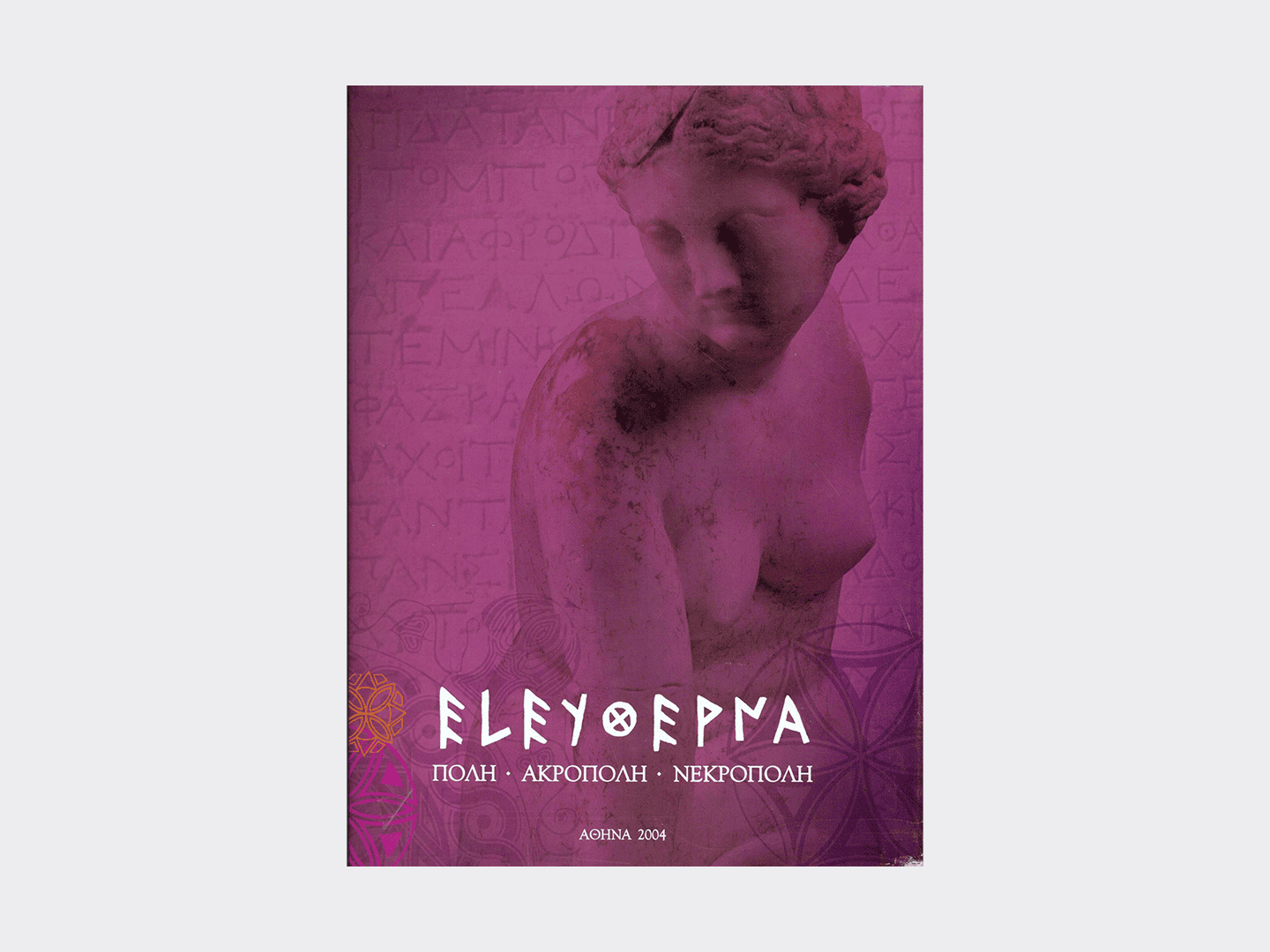
Eleutherna | exhibition catalogue
The catalogue of an exhibition on the results of the excavations at the ancient site of Eleutherna, Crete, which was presented at the Museum of Cycladic Art in 2004-05.
The catalogue contains 419 entries with detailed descriptions and colour photos of all exhibits, introductory chapters written by the excavators and full bibliography.
ΠΛΗΡΟΦΟΡΙΕΣ
Curated by
N.Chr. Stampolidis
Publication
Athens, 2004
Dimensions
30 x 23 cm.
Pages
317